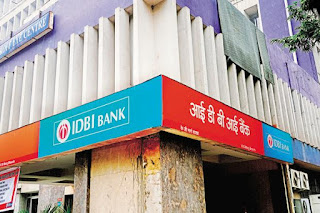Capital Float plans expansion in over 100 cities as it bids to offer loans for small brick-and-mortar store owners for a bigger share of the growing financial lending market
SME lending platform Capital Float, run by Zen Lefin Pvt. Ltd, is
looking to expand its reach to over 100 cities and venture into newer
categories like loan for small brick-and-mortar store owners, as it eyes a
bigger share of the growing financial lending market in the country.
“We are expecting a 10 times growth by the end of March 2017,
adding 15,000-20,000 customers (borrowers) cumulatively across all the loan
products segment,” said co-founder and managing director Sashank Rishyasringa.
The company has offered loans to 3,000 borrowers until now.
Founded in 2013 by Rishyasringa and Gaurav Hinduja, Capital Float
has disbursed loans amounting to over Rs.400 crore.
A technology-led non-banking financial company (NBFC) underwrites
unsecured loans online to start-ups, business-to-business (B2B) providers,
manufacturers and e-commerce merchants through its own books.
It currently gets 33% of the business from online vendors.
With the aim of extending its focus to small mom-and-pop or kirana shops along with micro small and
medium enterprises (SMEs), the company has already made a mobile application
that approves loans in less than eight minutes.
Loans to kirana shops could be in the range of Rs.50,000-100,000.
India currently has minimal lending options for small businesses.
These businesses are largely ineligible to receive any financing from banks or
NBFCs.
Traditional banks ask for collateral, financial statements and
bank statements and do not offer small ticket size loans.
Capital Float is trying to solve the problem by lending money to
small businesses that might not have collateral, significant revenues or years
of experience.
The company offers an alternative for these small traditional
business houses that have largely banked on chit funds and local money lenders
to borrow money from.
Identifying a need to extend credit to such under-served, Rata
Tata, Vijay Kelkar (former finance secretary and chairman of the National
Institute of Public Finance and Policy) and Nandan Nilekani (co-founder of
Infosys Ltd and the architect of Aadhaar) will soon start a microfinance
institution named Avanti Finance, Mint reported on Monday.
Capital Float, which is currently focused on offering loans to
small and medium merchants in Tier 1 and metro cities, is now looking to
concentrate more on tier 2 and tier 3 cities. “I expect a significant
contribution of these cities (tier 2 and tier 3) to the company’s growth, which
could be around 33% by next year,” Rishyasringa added.
The loan products currently include working capital finance to
online sellers for 90-180 days, long-term finance to merchants for six months
to three years, bill discounting and taxi financing (loans for cab drivers),
among others.
Broadly, the company has partnered with e-commerce websites,
payment gateways, cab services, amounting to 50 partnerships, including with
Snapdeal, Shopclues, Paytm and Uber to offer loans to a large pool of small
businesses and merchants who work with these partners.
The company is also eyeing profitability in the next 12 months on
the back of a robust demand for loans by SMEs.
To enable faster disbursal of loans, the company launched its
mobile application two to three months ago, which is privately available to
businesses through partners.
While loan applications were initially accessible only through the
website, Capital Float is now seeing that mobile application and mobile
browsing has grown to contribute 50% of loan applications, said Rishyasringa.
The mobile application is built on four technology pillars of
India Stack—Aadhaar-based authentication, an electronic process of
know-your-customer (e-KYC), electronic signature (e-Sign) and unified payment
interface (UPI).
India Stack is a set of publicly available application programming
interface (API)—that enable companies to build applications and businesses
based on these four pillars.
The fin-tech company receives a loan enquiry every three minutes,
said Rishyasringa. An inquiry implies a prospective borrower initiating a loan
application process.
While the company remains stringent in extending loans, by
approving 20% of the applications, total loan disbursal amounts to an average
of Rs.70
crore per month.
Additionally, the average loan amount extended to a merchant is Rs.10 lakh
at an interest rate of 16-19%, for a tenure of between 60 days to 2-3 years.
The company maintains and targets to continue to maintain a non-performing
asset (NPA) proportion of less than 1% of its total loan amount.
NPA is the proportion of the amount of bad loans to the total
amount of loan disbursed.
Backed by George Soros’s Aspada Investment Co., SAIF Partners and
Sequoia Capital, the company has raised $42 million, including $25 million in
series B round of funding in May.
Other players in this segment that Capital Float competes with are
Capital First Ltd, NeoGrowth Credit Pvt. Ltd and SMEcorner.in (Amadeus Advisors
Pvt. Ltd). In July, NeoGrowth raised $35 million from IIFL Asset Management,
Accion Frontier Inclusion Fund managed by (Quona Capital) and Aspada
Investments, along with other investors







